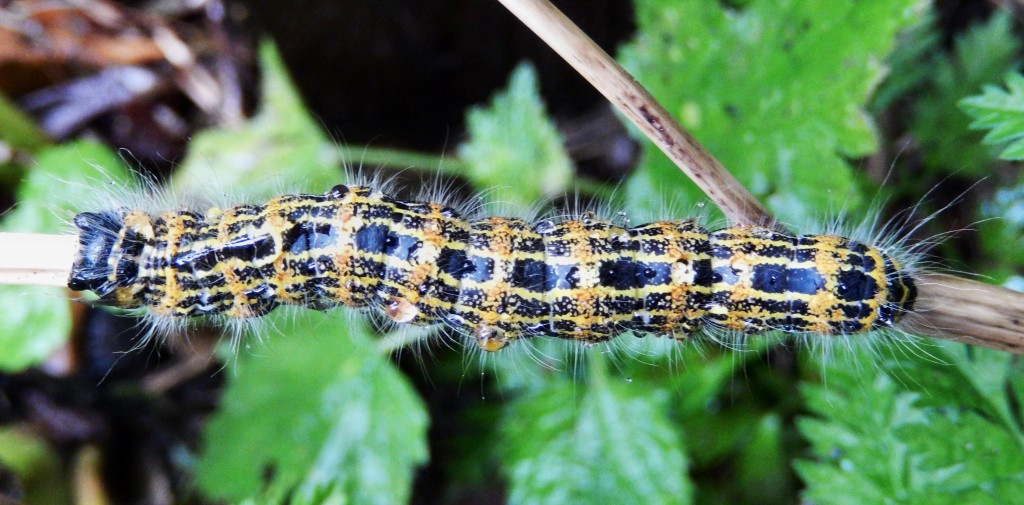
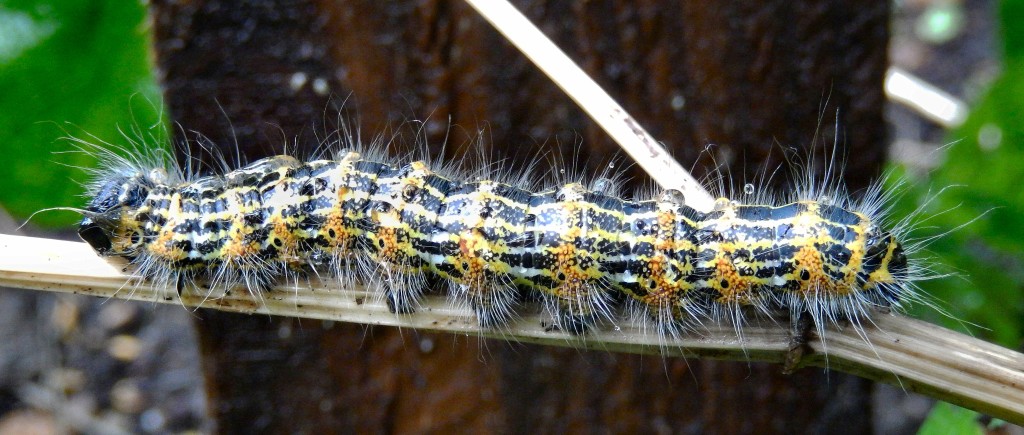
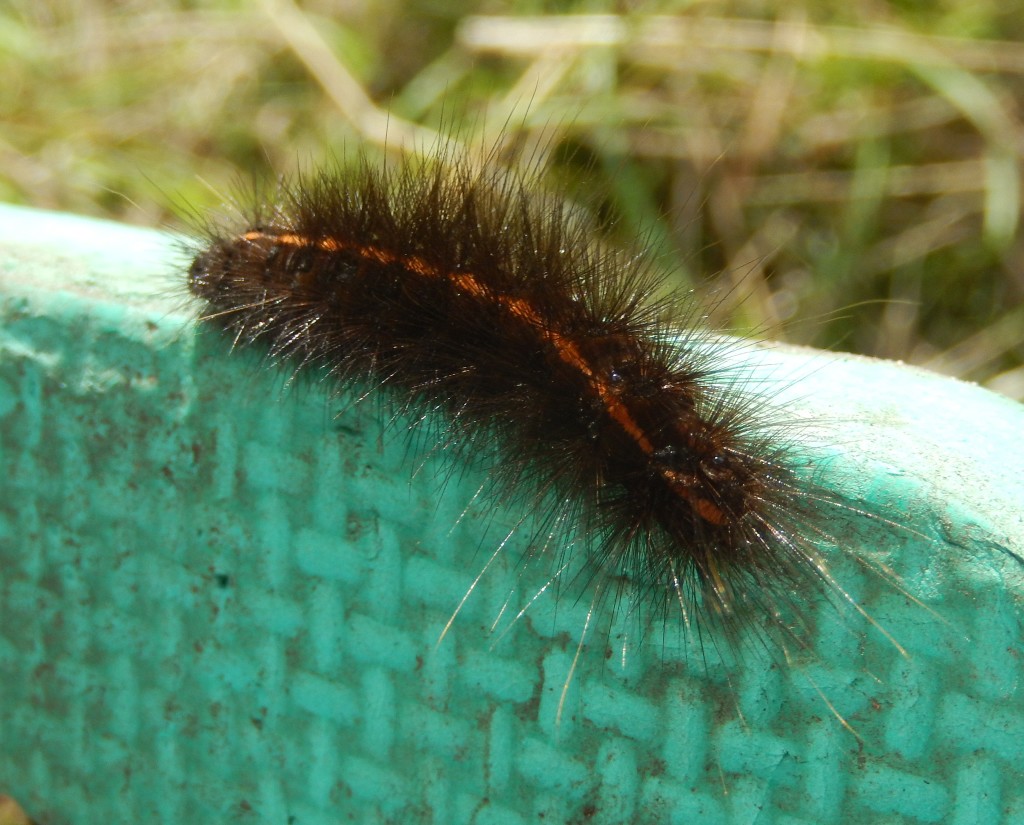
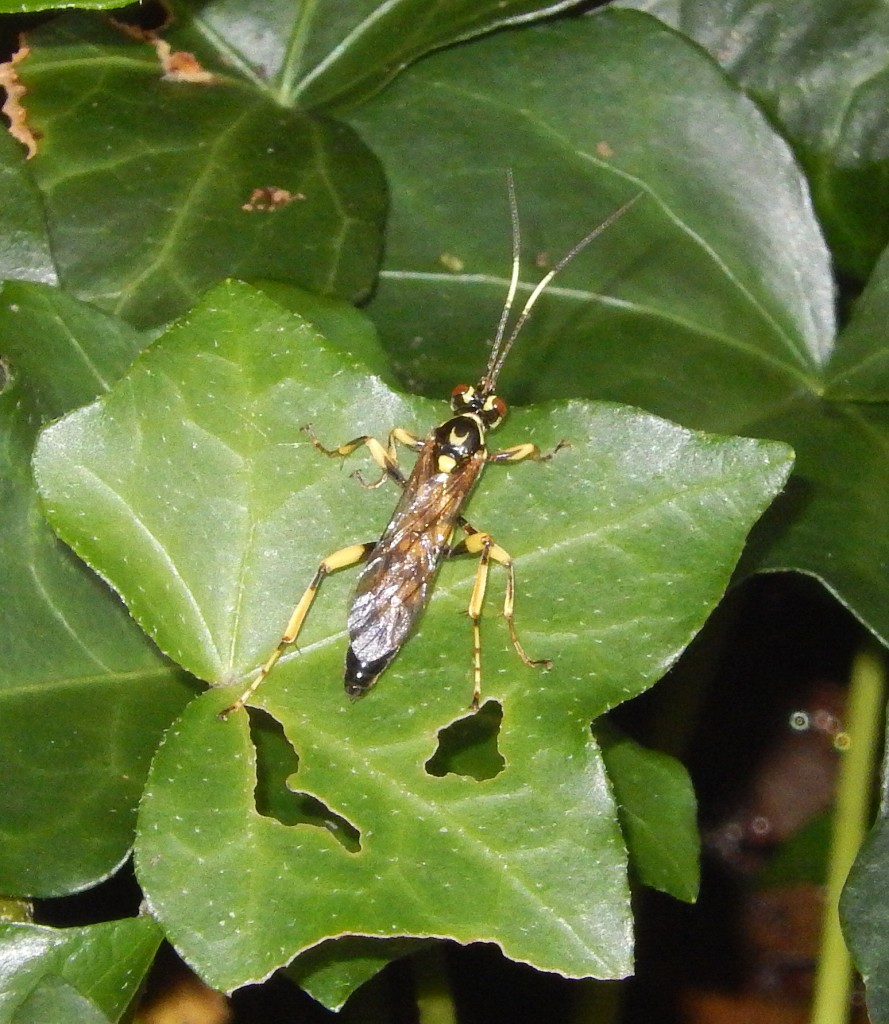
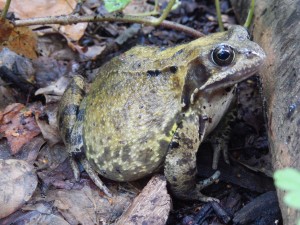
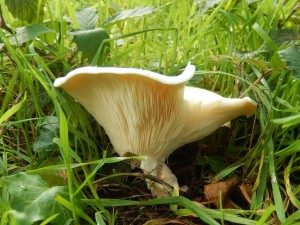
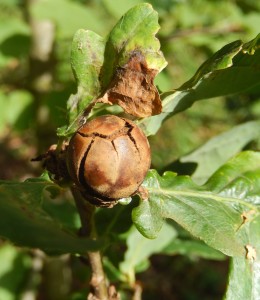
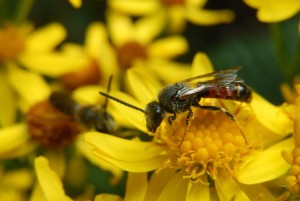
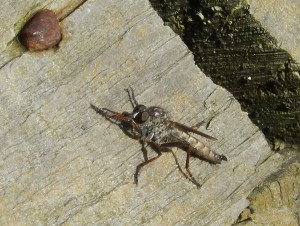

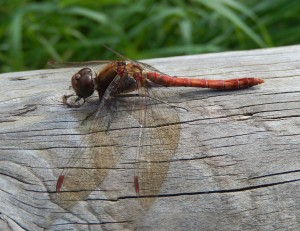
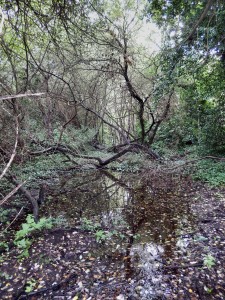













It was a day for signs: we worked all morning digging two deep post-holes for a new welcome signboard beside the ramp path, telling stories as we dug down through dry soil, pebbles and then soft clayey subsoil. Eventually we were deep enough and level enough to pop the sign in, and with nothing more than the spoil, pebbles, and a spirit level and a bit of tamping, we had a fine new signboard up. As if by magic, the TV camera team from ChiswickBuzz arrived to film us holding up spades, a Green Cross banner (some sort of quality of service award), and asking us to cheer improbably, so we shouted 1-2-3 Hooray! and waved spades like idiots, and the camera crew looked happy and wandered off.
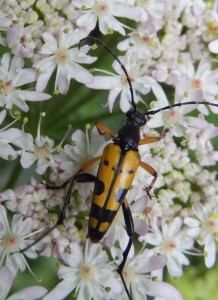
There were some bright black-and-yellow insects about pretending not very convincingly to be wasps, but their warning signs seem to work pretty well. After lunch we came back past the signboard to do a butterfly transect, and we nearly cheered as a visitor took a good look at the signboard. We joked that with an apostrophe missing, we’d have to dig the sign out and send it back for a refund.
On the transect we had good numbers of butterflies, but without so much sunshine it was without the masses of Gatekeepers of a fortnight ago. There were a pair of Commas, a Red Admiral, a Brimstone, and plenty of Small Whites, Speckled Woods, Holly Blues and Gatekeepers. A pair of (Migrant or Southern?) Hawkers scooted about from the hut to the ramp; down by the pond was an exuviae of something like a Broad-Bodied Chaser; a Common Darter sunbathed on the boardwalk, and a pair of Azure Blues wandered above the now happily full pond, laying eggs. The reserve echoed to the crash of demolition from the High Street.
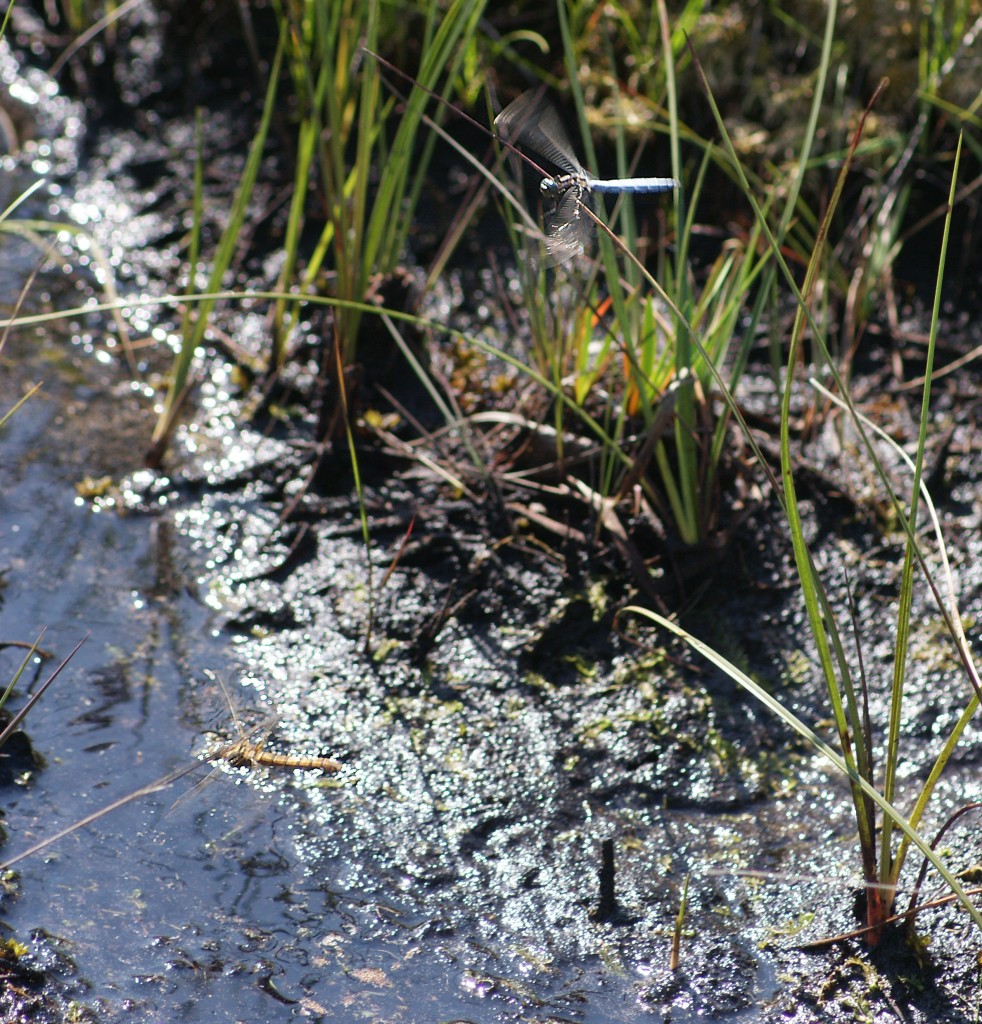
It was suddenly summer again this morning, so I packed cameras, binoculars and a sandwich and went down to Thursley in glittering sunshine. This photo perhaps catches something of the dazzle and sparkle of the bog pools and their shimmering guardians: a pair of Keeled Skimmers (Orthetrum coerulescens) are flying over the water; she is darting down to lay eggs, he is hovering above, guarding her from other males. Their wings sparkle and flash, and it is amazingly difficult to follow, frame, focus and shoot fast enough to get anything like a decent picture. But I rather like the motion blur in this one, and if it’s not perfectly in focus, you know why. I hope you like it too.
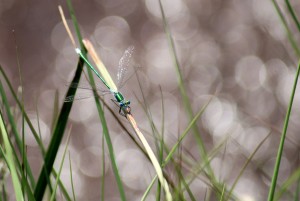
I was pleased, too, with this shot of an Emerald Damselfly, the sparkling water behind it forming a pattern of pleasantly out-of-focus circles.
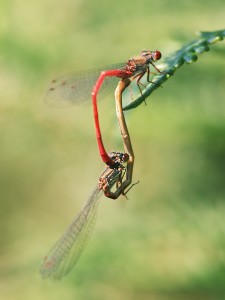
There were quite a few Small Red Damselflies about, mostly single but a few egg-laying pairs; and a modest number of blues, most likely Azures.
Apart from the hundreds of Keeled Skimmers, other dragonflies included Common Darter, Black Darter (I only saw a few females today), Black-Tailed Skimmer (just one), and Southern Hawker.
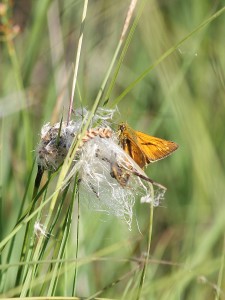
We saw few butterflies apart from Large Skippers which bustled about flowers near the boardwalk, and little Gatekeepers (I do mean they were smaller than usual) … until we arrived on the amazing Parish Meadow that was once a dump for emptying cesspits. Now it has an ecology strikingly unlike the rest of Thursley Common.
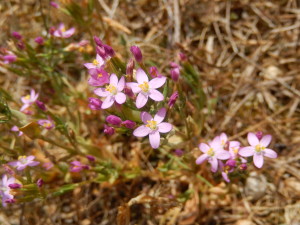
The meadow was full of Meadow Browns, Graylings (mating), Ringlets, Essex Skippers, a Brimstone, Large and Small Whites, and … a Purple Hairstreak (about the Oak trees). The rabbit-bitten pasture, dotted with little flower-stalks of Centaury, was thick with Ragwort, which in turn was richly covered with Cantharid beetles, solitary bees, wasps, and hoverflies and other Diptera. We put up a Silver Y moth which obligingly landed in front of us and perched in the open. We found the traces of a Green Woodpecker killed by a Sparrowhawk; but happily saw a live one in the Oaks nearby.
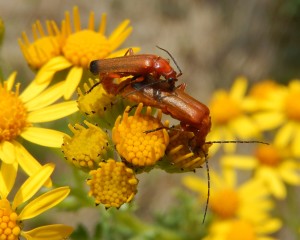
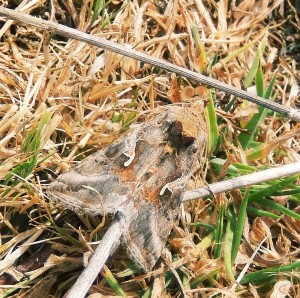
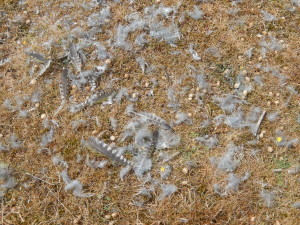
The boardwalks were busy with Lizards and Skimmers sunning themselves.
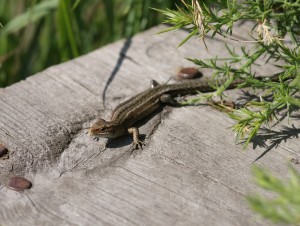
We met a local group of birders, complete with masses of tripods, telescopes and cameras, and asked if they were looking at the Stonechats. No, they replied, the Hobbies, there are three. We looked up, and sure enough there were three raptors. But in our binoculars, they turned out to be a Kestrel, a Hobby, and a Red Kite! Perhaps there were some more Hobbies somewhere else.
A little way further, absent the birders, we found a dead tree with some juvenile birds perched about it, and a lot of twittering. Yeah, a typical Chiswick Cafe. Some of them were young Redstarts; the others, young Stonechats: pretty confusing. But the Redstarts flew up into a Pine tree – not a Stonechatty thing to do – and sure enough, there was an adult Redstart on a lower branch, plain to see. And a Stonechat adult rasped out its grating call over to the right.
In a group of tall Oaks, we sat and ate a sandwich; and a Spotted Flycatcher flew across and perched on a high dead branch. It spent five minutes looking about, twisting its neck remarkably, but making no sallies. When I was a boy I saw them in the garden every summer; now they’re really something special, like, er, Starlings and House Sparrows.
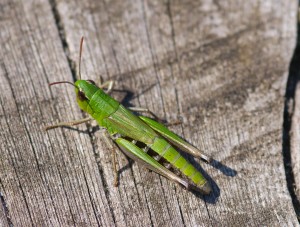
The sandy heath paths were full of little holes dug by Ammophila Sand-Wasps, and others made by Philanthus Bee-Wolves (or Bee-Killer Wasps). Both are called digger wasps (“Sphecidae”) in most books, and it’s certainly a good name, but the family has been split up, so Philanthus is now in the Crabronidae, which contains most of the old “Sphecidae” (we’ll have to say sensu lato for this); the new Sphecidae (sensu stricto) only contains what used to be the Sphecinae, which includes Ammophila. Rich scope for confusion. Sphex is the ancient Greek word for wasp, and it’s interesting that Linnaeus chose this word for a digger wasp rather than the social wasps, which have the Latin name Vespa for the hornet, and Vespula, little wasp, for common wasps.
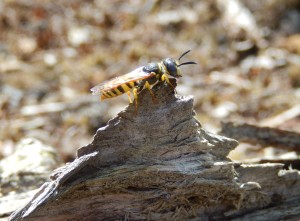
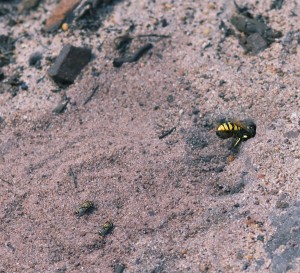
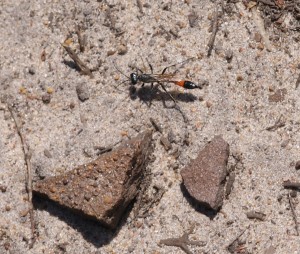
Out of a low bush of willow and gorse right beside a boardwalk came a strange, quiet but insistent squawky chatter of alarm. Peering in between the branches, a small slim dark bird with a long dark tail could be seen hopping about anxiously: a Dartford Warbler. It was extraordinary to be within a few feet of this shy, rare and retiring bird, and watching it for several minutes. There are actually quite a few on the heaths of Surrey and the south coast, but they’re never easy to see—most of my views have been of disappearing rear ends, diving into gorse bushes.
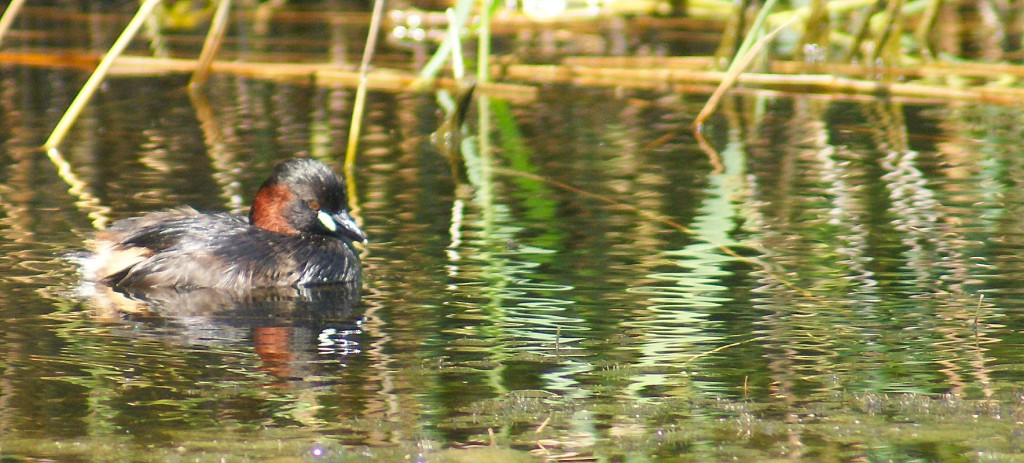
I wasn’t really birding but it was nice to see a little cloud of House Martins flycatching, and a richly dressed Dabchick diving for food.
Foamy wisps of scented Meadowsweet flowers were visited by honeybees; a Strangalia maculata longhorn beetle (it doesn’t have an English name, but it’s not the one usually called Wasp Beetle) clambered slowly over the flowerheads. It looks reasonably wasplike, if not terribly convincingly; it would be interesting to know if it is itself foul-tasting and hence actually aposematic, or just hitching a free ride through Batesian mimicry.
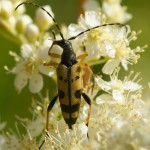
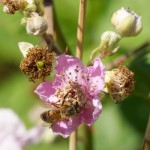
The Wetland Centre was very sunny, a little windy for butterflies (only Small Skipper, Red Admiral and Green-Veined White) but with the bees buzzing around the many flowers, very attractive. Several Orchids were in bloom, including purple and pyramidal. Even the different bindweeds looked wonderful. A pair of Mute Swans rested calmly with a cygnet or two at the bronze feet of Sir Peter Scott.
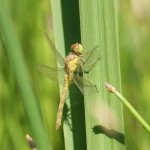
The dragonflies included one Black-tailed Skimmer, sunning itself on a “wildside” path; several blue hawkers, probably Hairy Dragonflies; an Emperor; a teneral darter, probably Common Darter; masses of blue damselflies – all the ones I managed to check were Azure Damselfly; and a few Common Bluetail damselflies.
Immature male Common Bluetail damselfly
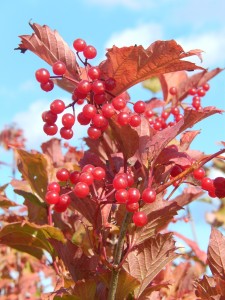
Today a brisk southwesterly wind blew the ragged clouds away, and it suddenly felt very much like autumn. The willows have lost many of their leaves, while other trees are still fully clad in green. Down at the Wetland Centre, the Guelder Roses were resplendent in scarlet: the photo is exactly as taken.
Down on the grazing marsh, a few migrant birds were giving the resident birdwatchers a treat. The Peacock Tower echoed to excited calls as a Whinchat perched on a faraway reed to the left, a Jack Snipe bobbed obligingly among some dead reeds to the front, and a Stonechat perched momentarily on a reed to the right. To my own surprise I saw all of them, even confirming that the Jack Snipe was bobbing up and down and had a dark stripe down the centre of its head. When it sat still it was marvellously hard to see, even in a telescope zoomed in and centred on the bird, its disruptive patterning doing an excellent job of breaking up its shape and matching the light and shadow of the vegetation around it.
Round on the wildside of the reserve, a few (Migrant) Hawker dragonflies and some Common Darters were still flying; and overhead, five House Martins, presumably on their way down south from somewhere far to the north, were busy refuelling on the many small insects flying over the water.
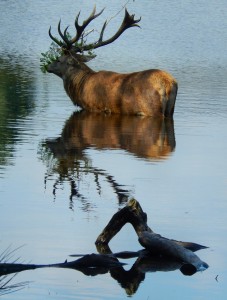
An Indian Summer is one of those special times. Yes, autumn is here; yes, flowers and leaves will soon fall; yes, season of mists and mellow fruitfulness, all of that: but for a brief moment, we know it is warm, even hot; that the time is precious, and we must seize the moment; and we drop everything to go outside with binoculars and camera to see whatever is to be seen.
And it is as wonderful as we could have hoped, warm and blithe. The Jackdaws hop about, quick to take their opportunities: some seem to live exclusively on sandwiches and crumbs. A Jay perches close by on an oak branch, abandoning the usual caution of its species. A series of high-pitched calls is not the usual posse of Ring-Necked Parakeets, but a family group of three Hobbies almost overhead, wheeling, diving, chasing each other, showing off their power and agility with long angled wings, stooping into a mock dive, fanning a tail, their black moustaches clearly visible.
Down at the Pen Ponds, pairs of Common Darter dragonflies are still in cop, laying eggs while the sun shines; around them zip Migrant Hawkers, and I glimpse one blue damselfly too. We walk around the ponds; a Heron flaps quietly across the water; a pair of Mute Swans ride high towards us, their two grey cygnets sailing between them.
And then, quite suddenly, I saw him: a stag with fine 14-point antlers, brimming with testosterone, preparing for the autumn rut. He stood quite still, up to his belly in the water. He had decorated his head with vegetation – Bracken and some Oak twigs – and was now quietly absorbing the elements, sun and water, as he listened to the occasional preliminary roar of another stag in the distance. In a few weeks he will be fighting for a harem of hinds; but today, he seemed contemplative.
A few hundred yards away, in the open grassland, a group of twenty hinds is accompanied by a couple of young males with nearly straight antlers. A big stag will surely put them to flight in an instant when the rut begins; but today, they grazed quietly with the females.
A Buzzard soared overhead, circling in the fair-weather thermals; one of the young Hobbies dashed past.
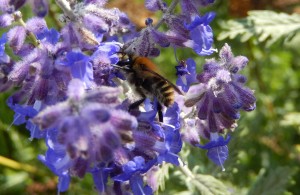
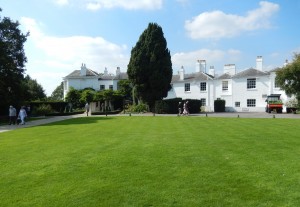
In the beautiful garden of Pembroke Lodge, they were preparing for a wedding, the lawn looking its verdant best, the bees buzzing softly in the still colourful flowerbeds full of tall daisies and delphiniums, lavender and alkanet. On the belvedere terrace, with its spacious view to the West, lovers made soft conversation at the café tables.
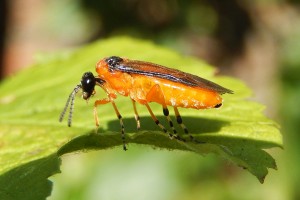
Back at home, a pair of bright saffron-coloured Gooseberry Sawflies (there are actually several species that attack gooseberries and other currants indifferently, I’m not sure what species this one is) were joyfully mating near my currant bushes, while others flew sedately about – they have a rather unusual steady flight, not like anything else. The air was warm and light; and the sawflies did not seem to have made any impact on the fruit crop. I was happy to get a photograph of one of the tiny insects, happy to see them flourishing in this Indian Summer.
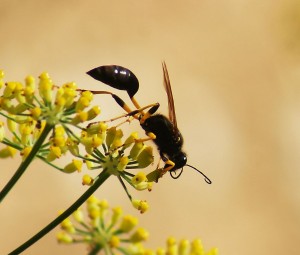
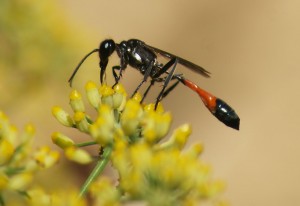
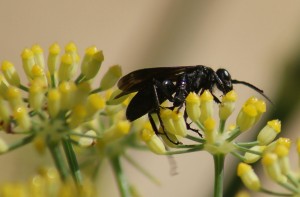
Today the morning sun blazed from a clear blue sky and the air around the tall handsome Fennel outside the kitchen swarmed with insects of all shapes and sizes, hastening to benefit from the plant’s abundant nectar. Among the visitors were the large black-and-yellow potter wasp, a small sand-wasp (Ammophila pubescens) – still a largish wasp, and a handsome species with its red and black abdomen – and an all-black spider-hunting wasp, like an Anoplius (and maybe of that genus) but without the red bands on the abdomen. Also enjoying the feast were many tiny solitary bees and a good number of flies of different species, including one with a long bristly red cylindrical abdomen, as well as what look very much like ordinary social wasps. A single red-and-black striped Trichodes alvearius beetle joined in.
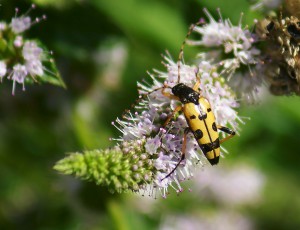
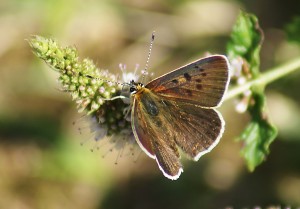
The garden Mint, now coming into full bloom, had an almost entirely different set of insects on and around it, including large flies (preyed on by Crab Spiders), a Strangalia maculata longhorn beetle, and a Sooty Copper. Half a dozen Gatekeeper butterflies chased about; a Wall Lizard scurried down the wall on the lookout for insect prey. A Large Skipper perched for nectar.
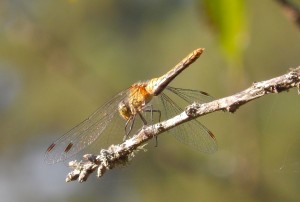
In the evening, two dragonflies hunted over the lawn. A Small Pincertail hawked up and down, its abdomen showing a roughly striped yellow and black appearance as it flashed past, wheeling up and turning aerobatically like a military helicopter over the box hedge. A Common Darter chose a perch at the end of any of three bare twigs on the Cherry, darting up like a Flycatcher, hovering, and landing again, often on the same perch. It was hard to see its markings against the light, even with binoculars, but by stalking it with the camera and adjusting the brightness and contrast it was possible to see its orange coloration and rather plain markings, as well as clear wings, excluding Yellow-Winged and Ruddy Darters, both of which I’ve seen here.
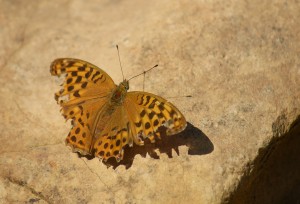
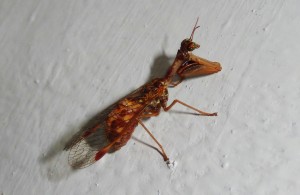
This rather beautiful small Mantis with a ‘millefiore bead’ pattern on its eye was resting on the kitchen shutters. I’ve never seen the species before: it is much shorter than the common green Praying Mantis of Europe that we get here (mainly on chalk, but also in sandy clay meadows), and it is probably well camouflaged in brownish grass or vegetation. The wings are surprisingly clear, so there is no startling ‘deimatic’ flash of bright colour available from the forewings. There seems no doubt, though, about the ‘praying’ front legs (I almost said ‘arms’).
Other insect visitors include Southern White Admiral and Scarce Swallowtail (actually commoner here than the ‘Common’ Swallowtail, a fast flier which we sometimes see).